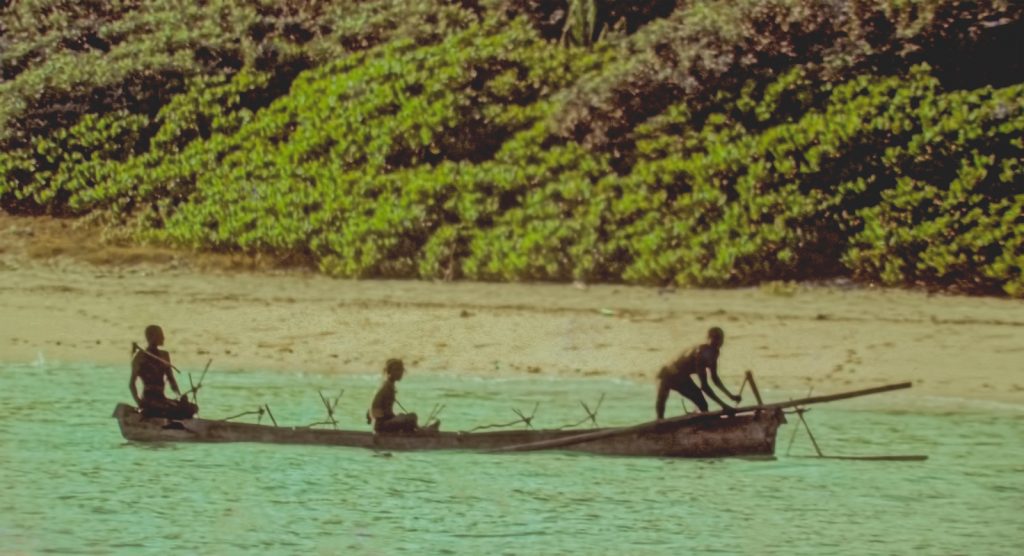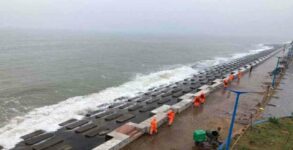An American man has been killed and buried by an isolated tribe in the Andaman and Nicobar Islands. The tribe, which lives on North Sentinel island, is protected by law and it is illegal for outsiders to visit the place.
So why did John Allen Chau get there? He was a Christian missionary trying to bring Christianity to this poor tribe.
Sentinelese tribe live about 58 km from Port Blair on the North Sentinel island of the Andaman and Nicobar. But the pre-neolithic Sentinelese tribe is far removed from modern civilisation. And they can be extremely violent with outsiders.
While not much is known about the Sentinelese people, experts do know they hunt and gather. Reportedly, the natives eat raw meat and fish – they have yet to learn how to make fire. Instead, the tribe waits for lightning to strike, keeping the flame alight for as long as possible.
Much like the Jarawa tribe, the Sentinelese are a secluded lot and several efforts to establish friendly contact with them had failed, until a 13-member team under anthropologist S.A. Awaradi could connect with them 27 years back.
Now, the focus is back on these indigenous people. A similar effort is all set to be initiated again. The tribals will be observed from a safe distance and if all goes well then a friendly contact will be established.
Recalling the first successful endeavour, Arawadi said the Sentinelese were observed for weeks from a “safe distance beyond the reach of their sharp arrows”. Then coconuts were thrown in the water as a gesture of goodwill, to build confidence and gain their trust.
Awaradi was then the Director of tribal welfare of the Andaman and Nicobar administration.
Awaradi — who was awarded a commendation certificate for establishing friendly contact with the Sentinelese by the Andaman and Nicobar Lt. Governor — recalled landing on the island with his team and being welcomed by around 26 tribals.
“We kept throwing coconuts in the water from a safe distance and they picked up the floating coconuts. After hesitating for some time, one young Sentinelese swam to our life boat and accepted the coconuts from our hands. We then went closer and stepped on the island,” Awaradi reminisced.
They communicated through gestures. The team, which included security officials and boatmen, didn’t go inside the forest or approach the tribal huts. The contact was for about 23 minutes.
“We continued observing them from a safe distance till 1993 but then discontinued,” Awaradi said.
While anthropologists believe hostility to be the most effective protection of these tribals against outsiders, a friendly contact with the Sentinelese could help in case of an emergency or epidemic.
“Outside contact makes them vulnerable to alien diseases, like influenza or STDs. However, fear of natural calamities and other diseases loom large. The island is on the route of several flights. In case of an air crash, the fate of the survivors would be hard to predict as the general impression is that these tribals are hostile,” Awaradi said.
“Now we are waiting for the suitable weather conditions. The Sentinelese had been observed but through aerial surveillance. We need to get closer, till the range of their arrows, for better observation,” Awaradi, now director of the Andaman and Nicobar Tribal Research and Training Institute, told IANS.
If the administration found it suitable, the expedition would try to establish a friendly contact with them.
It is believed that the Sentinelese settled there many thousand years ago. They were never contacted by other Negito or Mongoloid tribes of Andaman and Nicobar. However, the Onge tribe of the Andaman knew about their presence.
“No linguistic study has been done for the Sentinelese, though they belong to the same language family of the other Negito tribes of the Andaman, like the Jarawa,” Awaradi said.
Prior to the Awaradi’s successful endeavour, several attempts were made in 1967 and 1970 to contact the Sentinelese.
In 1974, a film crew along with security officials approached the Sentinelese to shoot a documentary, ‘Man in Search of Man’. Some of the crew members got injured by the arrows shot at them.
In 2006, two fishermen went near the island and were killed by the Sentinelese. The tribals also shot arrows towards the helicopter that went to retrieve the bodies.
The government has declared about five kilometres of the surrounding waters of the North Sentinel island as a prohibited zone.
Estimated to be a tribe of 50 to 200 persons, the Sentinelese escaped the 2004 Tsunami. It is believed that they sensed it and escaped to the higher ground of the forested island, which is about 27 square miles in area and surrounded by coral reefs.
“After the Tsunami, the Andaman group of islands, including North Sentinel, elevated by one to two feet and Nicobar went down by the same proportion,” Awaradi said.
The Andaman and Nicobar islands are home to six existing tribes, of which Negito tribes include the Great Andamanese, Onge, Jarawa and Sentinelese. The other two are Mongoloid tribes, Nicobarese and Shompen, who lived in the Nicobar island.
Another tribe called Jangil or Rutland Jarawa became extinct around 1920. Only the Nicobarese maintain a comparatively good population with 30,000 members.
The Great Andamanese were once 5,000-member strong. But over 98 per cent of their population died fighting the British. Many others succumbed to STD’s and influenza.
“At one point, their population dropped from 5,000 to 16. After independence, they were settled on different islands and kept secluded. Today their population is around 61,” Awaradi said.
There are about 300 Jarawas, 100 Onges and 300 Shompens left.

















